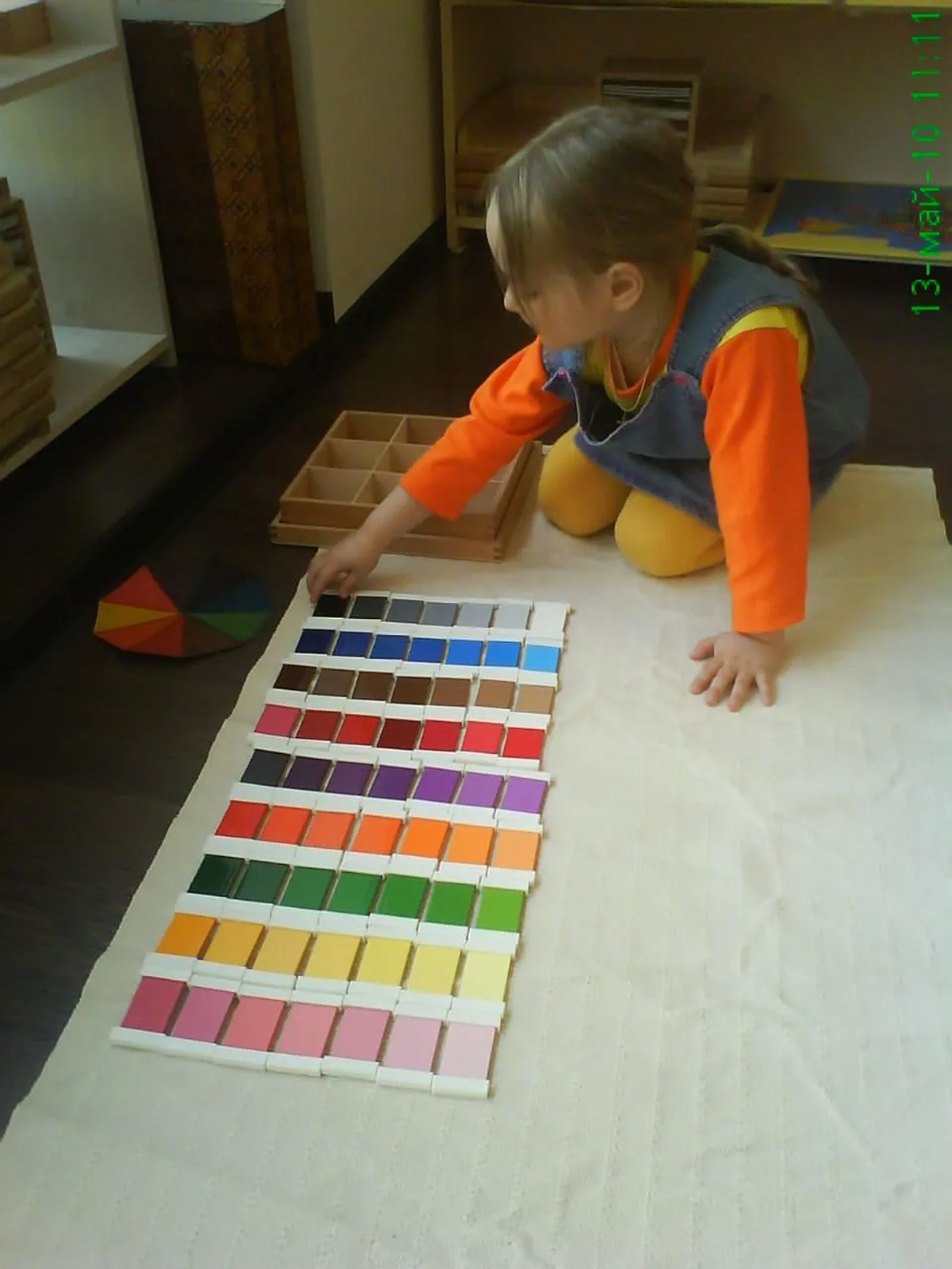Montessori Concept Clips: Making Sense of Sensory Materials
“There is nothing in the intellect which is not first in the senses.” ~Aristotle
So much of life is what we experience through our senses. From the moment our eyes first perceive the light of dawn until we slip between our soft sheets at the end of the day, our lives are a continuous stream of sensory experiences. Now, imagine that all those sensations are brand new; this is life to the little child. All those marvelous sights, sounds, and smells! So many amazing tastes and textures!
until we slip between our soft sheets at the end of the day, our lives are a continuous stream of sensory experiences. Now, imagine that all those sensations are brand new; this is life to the little child. All those marvelous sights, sounds, and smells! So many amazing tastes and textures!

The Montessori Method encourages children to indulge fully in sensorial intake. After all, this is one of the most natural and integral ways in which human beings learn and develop. But Montessori materials are designed to take this process a step (or several) further, to help children grasp new concepts and knowledge through their senses. Sensorial development is the foundation on which the child builds his or her own intelligence.
The training and sharpening of the senses has the obvious advantage of enlarging the field of perception and of offering an ever more solid foundation for intellectual growth. The intellect builds up its store of practical ideas through contact with and exploration of the environment…. ~Maria Montessori
An Introduction to Montessori Materials for Sensorial Development
Maria Montessori created sensory-learning materials for all five senses. Within each sensory category, there are sub-categories. For example, visual learning materials include those for learning relative size, color, shape, and form. Some of the customary Montessori materials for learning about relative size include:
- Cylinder blocks to discern different dimensions.
- Pink tower cubes to distinguish different sizes.
- Brown stairs to discern different widths.
- Red rods for differentiating lengths.

Visual learning materials also help children learn to distinguish colors (color tablets,) shape (geometric cards, figures, and solids,) and form (life science and geography cards, puzzles, and maps.)
Sense of touch learning materials fall into the following categories:
- Tactile-- touch boards to determine rough/smooth, and fabrics for texture.
- Thermic--thermic bottles and tablets to discern temperature.
- Baric--pressure cylinders and baric tablets for learning weight and pressure.
- Stereognostic--for the discrimination of form and texture: mystery bags, sorting activities, and baskets.
For learning through the auditory sense, Montessori materials include
sound cylinders, musical bells, indented boards, the musical staff, and charts. Auditory sense lessons help children learn tone, pitch, sound intensity/quality and how to read and write music.

Montessori did not forget the importance of the olfactory and gustatory senses. There are smelling cylinders and tasting bottles to help children identify certain smells and flavors. Of course, there are also many naturally-occurring opportunities in any given day to explore with the sense of smell and taste.
This is not intended to be a comprehensive list of Maria Montessori’s time-tested educational materials, but merely an introduction to the types of sensory-based learning materials you might find in a Montessori classroom, and a glimpse into their designated functions. Understandably, you may be seeking a more in-depth understanding of Montessori materials.
If you would like further information on this subject browse through the great selection of Blogs on this website or our Webinar Library.






















